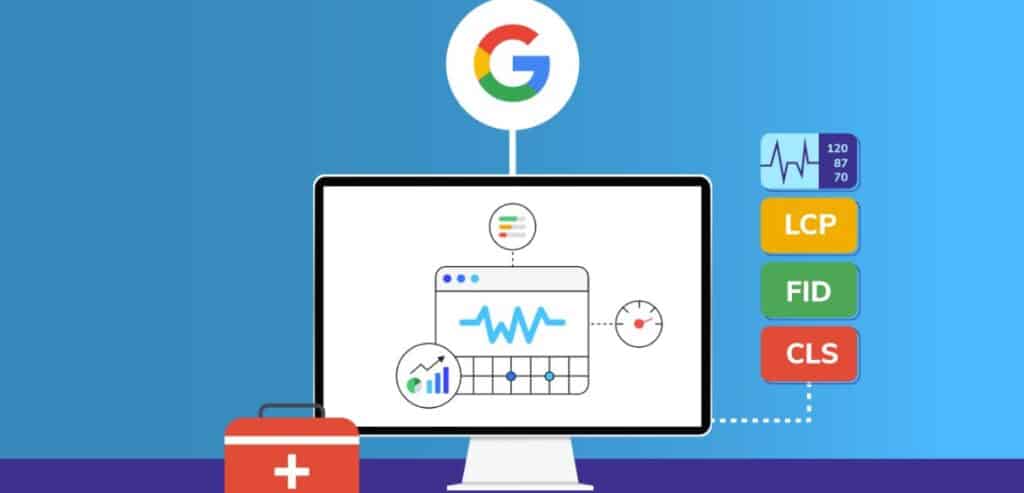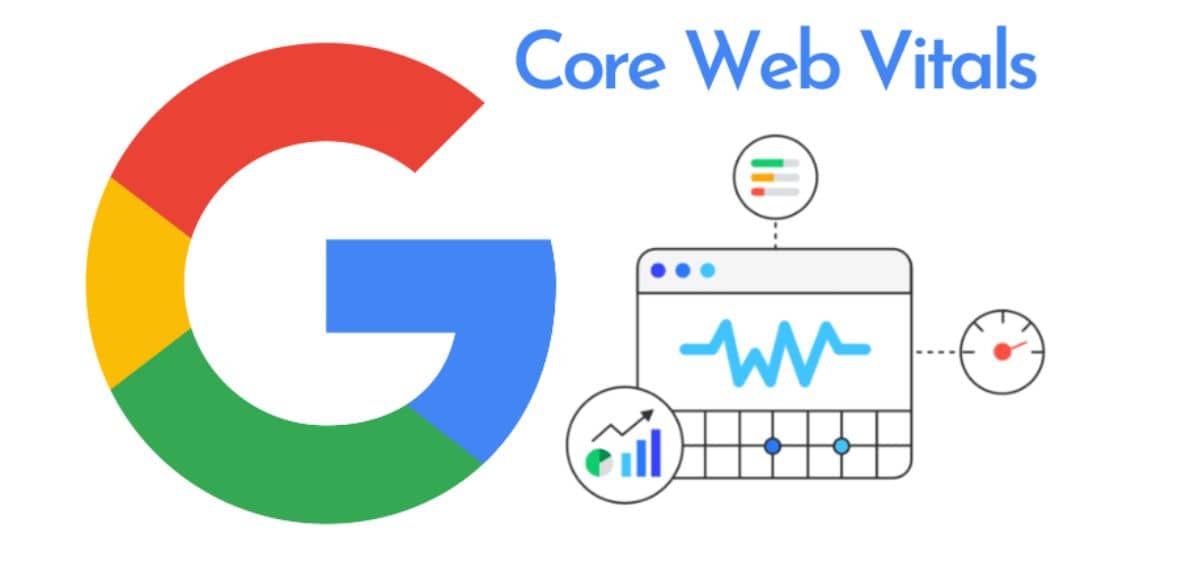In the competitive world of SEO, staying ahead means mastering the metrics that matter most. This is where Core Web Vitals entered, Google’s essential performance indicators that influence user experience and search rankings. As we step into 2025, optimizing these metrics is no longer optional but crucial for digital success. In this guide, we’ll break down each element of Core Web Vitals, reveal actionable strategies to enhance them and show you how to leverage this knowledge to climb the search engine ranks. Ready to transform your website’s performance? Let’s dive in!
What is Core Web Vitals

Core Web Vitals is a collection of key performance metrics that Google uses to evaluate a web page’s user experience. They are part of Google’s broader Web Vitals initiative, which offers standardized guidelines for delivering high-quality user experiences on the web. Core Web Vitals focus on three critical aspects of page performance: Largest Contentful Paint , this helps track loading speed; First Input Delay , which tracks interactivity; and Cumulative Layout Shift , this study your site visual stability. These metrics help ensure a fast, responsive, and visually consistent browsing experience.
Largest Contentful Paint (LCP)
It helps to identify the loading time performance of your site. It analyzes how long it takes for the content of your website page to become visible. Ideally, it should be within 2.5 seconds to offer visitors a more immediate and seamless experience. Users often feel frustrated because of slow loading speed which results in increased bounce rates for your sites.
First Input Delay (FID)
FID analyzes the responsive interactivity of your site. It monitors the amount of loading time it takes for a page to respond after a visitor interacts with it by simply clicking on a link or tapping a button. The ideal FID should be under 100 milliseconds. An unstable FID could potentially impact your user engagement.
Cumulative Layout Shift (CLS)
It analyzes your site’s visual layout. It tracks how much the layout structure changes unexpectedly while loading, which sometimes may lead the visitor to click on the wrong button or link. Aiming for a CLS score of less than 0.1 ensures a more user-friendly seamless experience.
Mastering these metrics means ensuring fast loading times, responsive interactions, and stable layouts, all of which enhance user experience and boost search engine rankings. In 2025, achieving Core Web Vitals Mastery is crucial for SEO success as Google continues to prioritize user experience as a key ranking factor. Websites that excel in these areas are more likely to see improved visibility, increased traffic, and higher engagement rates.
Benefits of Core Web Vitals

Improved Search Rankings:
Google search engines utilize core web vitals as a major factor for ranking, mostly prioritizing websites that provide a more premium quality user experience. By optimizing for Largest Contentful Paint (LCP), Interaction to Next Paint (INP), and Cumulative Layout Shift (CLS), your website will have a greater chance of achieving a higher rank in the search engine results. This enhances visibility and helps you gain more organic traffic leading to a broader audience reach.
Enhanced User Experience:
User experience is a crucial aspect of your website rankings. Core Web Vitals directly influence how users find your website. Instant loading time (LCP), multiple devices responsive interactions (INP), and stable site layout (CLS) help your readers to experience a smoother browsing experience. Users will be more likely to explore more into your website if they experience a seamless navigation experience, leading to lower bounce rates and higher session durations. Additionally, satisfied users are also mostly to return to your site, and share content, easily boosting your website brand quality.
Increased Conversion Rates:
Do you know an optimized site not only helps you gain more traffic but also encourages them to take action? Whether it’s making a purchase, signing up for a newsletter, or filling out a contact form, a fast-loading user-friendly website urges visitors to explore your pages more actively. Responsive interaction helps to reduce friction points while browsing, eventually leading to a lower cart abandonment rate and higher sales revenue.
Competitive Advantage:
In search engines, staying ahead is crucial, a website that masters core web vitals measures easily stays ahead in the competitive edge by providing a seamless user-friendly experience. This measure is especially more valuable for an industry that demands high expectations, fast loading speed and user experience. When visitors are satisfied with your site they are less likely to explore competitors’ websites. This helps to enhance your search engine ranking additionally impacting your brand authority and credibility.
Mastering Core Web Vitals in 2025 is not only limited to meeting Google’s technical requirements, but it’s also about offering a user-friendly experience. By focusing on these key factors you can easily build a faster, user-friendly and engaging website to rank in search engines.
Best Practices for Core Web Vitals

Improving your website’s Core Web Vitals is essential for providing a great user experience and boosting SEO performance. Here are some best practices:
Leverage a CDN for Faster Loading
Use a reliable Content Delivery Network (CDN) to distribute static assets such as images, scripts, and stylesheets across multiple servers globally. This helps to reduce the distance between visitors and your content leading to a more immediate loading time, especially those far away from your primary server.
Optimize CSS and External Scripts
Take steps to track and prioritize important CSS to ensure critical visual elements load more instantly. Defer unimportant CSS and JavaScript to limit render-blocking resources, but help to increase both LCP and First Input Delay (FID) by enabling the page to load more quickly and provide a faster response to user interaction.
Identify Key Content Elements
Monitor your website to identify the largest content elements impacting your LCP like hero images or long videos. Strategically arrange these elements by reducing their size and load order.
Enhance Overall Page Speed
Adopt a more strategic performance management including important database queries, optimizing server-side scripts, and implementing advanced caching measures.
These strategies will help to enhance your website’s Core Web Vitals by efficiently improving loading times and service times.
Implement Robust Caching Mechanisms
Implement a broader catching strategy by using both browser and server-side caching. Proper management of caching reduces server requests leading to a more positive impact on LCP and FID, allowing faster content retrieval.
Optimize Mobile User Experience
Keeping in mind the growing rate of mobile browsing always ensures your site is fully mobile responsive for users. Analyse navigation, manage touch elements for better user experience and reduce mobile-specific code bloat to effectively manage a low FID and CLS on mobile devices.
Utilize Server-Side Rendering (SSR)
JavaScript-heavy sites should consider utilising SSR to reduce TTFB ( Time to First Byte). By effectively pre-rendering content in the servers, SSR helps to provide a faster initial page loading time, increasing LCP and providing a seamless user experience.
Implement Intelligent Lazy Loading
Implement lazy loading to reduce the loading of offscreen elements until they are necessary. By prioritizing above-the-fold content lazy loading helps to improve LCP and FID. This ensures your users can interact with important elements instantly while the secondary content loads in the background.
These advanced strategies, when implemented thoughtfully, can significantly enhance Core Web Vitals, leading to better user experiences and improved search engine rankings.
Top Tools to Measure Your Google Core Web Vitals

Measuring and monitoring your core web vitals is important for analyzing your site user experience and managing its performance effectively. There are several helpful tools that can help you monitor and improve your core web vitals scores effectively. Below are the top tools that help you manage your core web vitals:
Google PageSpeed Insights
PageSpeed Insight is one of the best free tools widely used by a number of users to actively analyze their website metrics and offers effective solutions to manage loading speed and user experience. To start with PageSpeed Insights:
- Visit the PageSpeed Insights website.
- Enter the URL of the page of your website you want to analyze.
- Click the “Analyze” button to receive a detailed report with recommendations for improvement.
The tool provides insights for both mobile and desktop performance, helping you understand how different users experience your website.
Google Search Console
One of the popular tools Google search console is an important tool for tracking your website performance in search results. It provides a detailed core web vitals report, which highlights the critical pages that need improvement. To get the detailed report start with:
- Log into your Google Search Console account.
- Select the website you want to analyze from the property drop-down menu.
- Navigate to the “Experience” section in the left-hand menu and click on “Core Web Vitals.”
This report categorizes pages into “Good,” “Needs Improvement,” and “Poor” based on their Core Web Vitals scores, enabling you to prioritize optimization efforts.
Lighthouse
Lighthouse is a popular open-source tool designed automatically to improve the quality of website pages. Integrate indirectly into Chrome devtools it offers a dedicated audit covering performance metrics including core web vitals. To start with this:
- Open Chrome and navigate to the webpage you want to analyze.Right-click on the page and select “Inspect” to open Chrome DevTools.
- Click on the “Lighthouse” tab in the DevTools panel.
- Choose the categories to audit, ensuring “Performance” is selected to include Core Web Vitals.
- Click the “Generate Report” button to receive a detailed breakdown of performance metrics and suggestions for improvement.
These tools offer comprehensive insights into your website’s performance, helping you make informed decisions to optimize Core Web Vitals and deliver a superior user experience.
Conclusion

Improving Core Web Vitals is crucial for better user experience and SEO performance. By optimizing loading speed, interactivity, and visual stability, you can create a faster, more responsive website. Implementing best practices like image optimization, minimizing JavaScript, and using a CDN will help meet Google’s standards and boost user engagement, ultimately improving search rankings.












